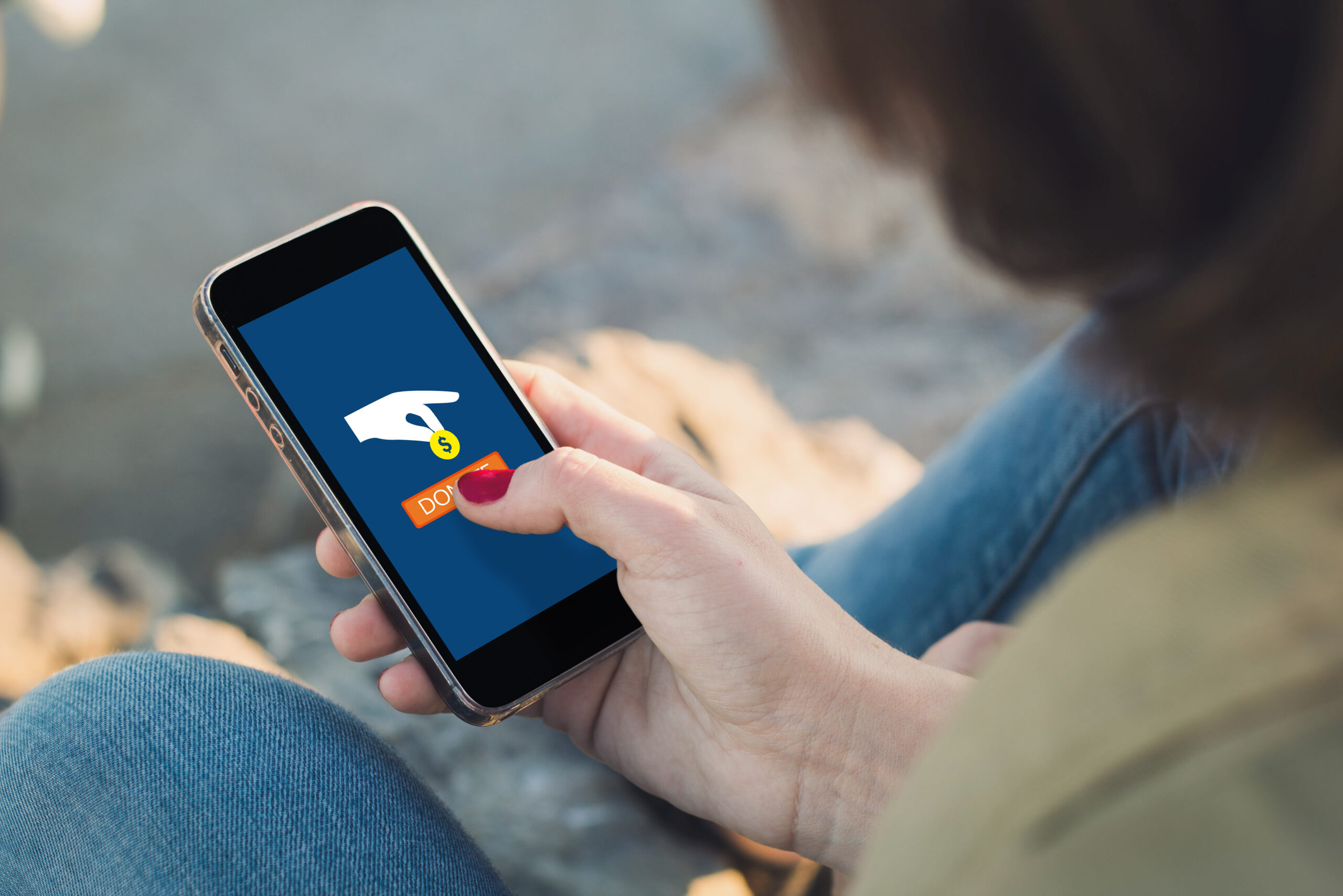
Facebook fundraising makes it easy for users to show their support of your mission with a quick donation.
It’s easy to post a link to a crowdfunding platform or to your website’s donation page, but letting supporters give directly through Facebook makes it even easier to capture impulse donors.
And they’re scrolling through Facebook every day anyway.
Facebook fundraising tools are designed to keep people on the site rather than send them to a crowdfunding platform or other website.
To sweeten the incentive, Facebook charges no fees. Your organization gets the full donation.
So what’s the catch?
For starters, you don’t get contact information for all your donors, only those who choose to share. This means you can’t thank the donor properly, you can’t follow up with them to share updates, and you can’t build the all-important donor relationship.
For long-term fundraising success, you need to capture donors’ contact information so you can nurture them into becoming loyal, repeat donors.
Also, with Facebook fundraising you give up the opportunity to bring donors to your website, where they’ll have other ways to engage with your work, such as signing up for your newsletter, reading a compelling story, and browsing through volunteer opportunities.
Again, not ideal.
And then there’s the nature of Facebook. It’s ALWAYS changing, and it’s not like anyone is asking you for your feedback before making changes. You have zero control over Facebook and its ever-changing policies. Also frustrating.
Despite the downsides, Facebook can be a powerful fundraising tool. If you choose not to pursue fundraising on Facebook, you’re probably leaving money on the table.
So, if Facebook fundraising is a big game, how do you win?
Leveraging Facebook Fundraising
There are several ways to leverage Facebook, and I want to be sure you’re using them too.
- Set up a Facebook fundraiser yourself, either a full-on campaign or a mini-fundraiser like a $5 Friday.
- Encourage supporters to set up birthday fundraisers on their pages, with your organization receiving the proceeds.
- Put a donate button on your organization’s Facebook page as a permanent feature.
Facebook fundraising tools provide opportunities for bringing in donations from people who are interested enough in your work to follow you on Facebook (but not yet donating through your website).
For most organizations, especially ones that invest time creating and sharing compelling Facebook content, this represents a significant number of prospects and building a large following.
Facebook fundraising isn’t a replacement strategy – it’s simply another piece of your fundraising pie.
However, if you do it right, it can turn into a significant slice of pie for your organization!
Setting Up a Facebook Fundraiser
 First, let’s look at the Facebook fundraiser, one where you set up the campaign yourself.
First, let’s look at the Facebook fundraiser, one where you set up the campaign yourself.
This strategy is similar to any crowdfunding strategy, but instead of using a separate platform like GoFundMe, you use Facebook.
As a first step, you need to sign up your organization for Facebook fundraising tools. For an organization based in the United States to qualify for Facebook’s fundraising tools, you must be a 501(c)(3).
You must provide a copy of your 501(c)(3) letter, a letter from your organization’s bank along with account information, and your Executive Director’s full name, address, and date of birth.
Some organizations aren’t comfortable providing such detailed information to a company that has come under fire for privacy concerns. I get that.
If your Board doesn’t want to provide this information to Facebook, this fundraising strategy isn’t right for your organization. But you can still ask your supporters to set up fundraisers on their pages. Those donations will come from PayPal Giving Fund (the entity that handles Facebook donations). More about this strategy later.
Unfortunately, if your organization has a fiscal sponsor, you’re not eligible to receive donations from Facebook fundraising tools.
If your organization is based outside the United States, check to see if you’re eligible for Facebook’s fundraising tools.
If you’re eligible and willing to provide the required information, start your application here. It can take a few weeks to get approved and heads up – the name of your nonprofit on all documents you submit MUST match. If you use a slightly different name on your bank account, Facebook will kick your application out. (Ask me how I know!)
While waiting for approval, go ahead and work on building up your Facebook audience. Post engaging content every day. Encourage sharing. Ask your Board members and loyal supporters to make a special effort to like and share your content and to encourage their Facebook friends to like your page.
Once you’re approved, you’ll be ready to launch your campaign!
Planning Your Facebook Fundraiser
Only a page administrator can set up a Facebook fundraiser. Go here to learn more about using Facebook to set up your campaign.
A Facebook campaign isn’t all that different from any other campaign. There are definitely things that will make it more successful, like:
The success of Facebook fundraising, like any crowdfunding campaign, depends on the strength of your network. If you already have a large number of Facebook followers, you can maximize this strategy to deliver big. If you’re in the early stages of building your Facebook presence, incorporating the platform’s fundraising tools will enable you to center your strategy on converting followers to donors.
Conducting a $5 Friday Fundraiser
Anyone who knows me knows how much I love the $5 Friday fundraiser!
This strategy focuses on a small solvable problem that’s well defined and invites people to make an impact by giving just $5. It’s a great way to raise money, raise awareness, and gain new supporters. And it lends itself beautifully to Facebook fundraising.
Here’s what you do:
 Focus on a need that can be addressed with just $1,000 or less. Maybe your organization’s vehicle needs new tires, or maybe your students need headphones for school. Maybe you need to replenish your food pantry’s supply of toiletries, or maybe you need to buy subscriptions to an online math program for students in your after-school program. Maybe you need hay for the winter for rescued horses.
Focus on a need that can be addressed with just $1,000 or less. Maybe your organization’s vehicle needs new tires, or maybe your students need headphones for school. Maybe you need to replenish your food pantry’s supply of toiletries, or maybe you need to buy subscriptions to an online math program for students in your after-school program. Maybe you need hay for the winter for rescued horses.
- Set up the campaign, describing the need with a heart-tugging paragraph and illustrating the need with a compelling photo or video. Post the campaign first thing on Friday on Facebook and any other social media channels you have, linking back to the fundraiser page.
- Share the campaign to your personal Facebook profile and tag a few friends to make sure they see the posts.
- Challenge your Board members and a few key donors to ask five or ten friends to chip in just $5.
- Promote the campaign throughout the day until you reach the goal. If you don’t make it, it’s ok to extend the campaign through the weekend.
- Celebrate the campaign’s success, emphasizing that even small gifts can add up.
- Send thank-you messages and emails to donors with the same enthusiasm as you would for major donors. A gift of $5 today could lead to a gift of $100 or $1,000 next time.
Here’s a first-time $5 Friday from Roanchar Ranch Draft Horse Rescue. Notice the small goal ($192) and the solvable problem (buying a mask to keep flies out of Barney’s eyes):
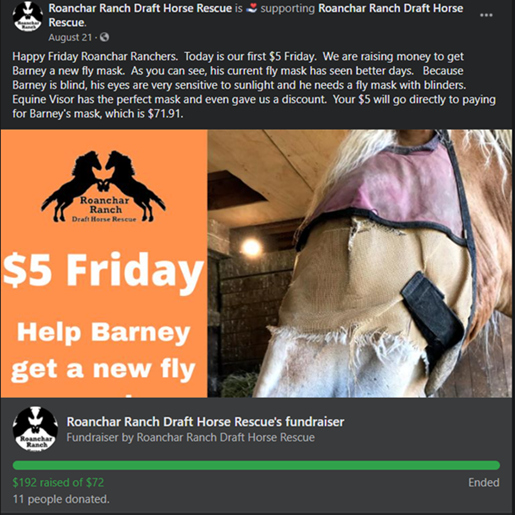
Here’s another sample $5 Friday from Beautiful Feet Ministries of Tanzania. Notice the impact of the story and photo, and the much larger goal:
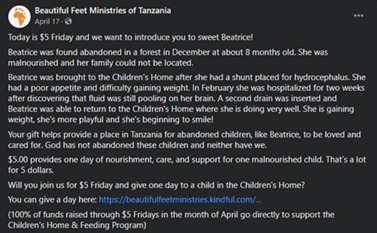
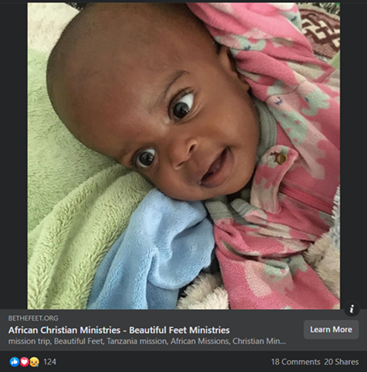
Another Type of Facebook Fundraiser: Birthday Fundraiser
Another popular way to raise money on Facebook is for supporters to raise money on their page on behalf of your organization. This is commonly known as a birthday fundraiser, but a supporter can set up a fundraiser anytime, not just on their birthday.
The beauty of a birthday fundraiser is that the audience is the friends and family members of the person hosting the Facebook fundraiser. This gives you a chance to get donations from beyond your usual network.
Most of the people who donate through a birthday fundraiser are doing so to support the person asking, not to support your organization. These donors are unlikely to become repeat donors.
Still, some birthday fundraisers bring in significant funds, and that’s worth the effort. If everyone on your Board commits to a birthday fundraiser over the course of a year, the combined gifts will add up to a lot!
Another positive with birthday fundraisers is you can benefit from them even if your organization chooses not to sign up for Facebook’s fundraising tools and payment program. You’ll simply get a check in the mail from PayPal Giving Fund within about 90 days – but you won’t get any donor information (so just know that).
Another quirk with receiving funds through PayPal Giving Fund is you’ll not know who hosted the fundraiser! If someone tells you they did a birthday fundraiser in your organization’s honor, make note of the donor, the date, and the total amount so when you get the check three months down the road, you’ll know where the funds came from.
Be sure to thank the donor profusely for hosting a Facebook fundraiser. Consider making a graphic for them to post on their Facebook page thanking everyone who contributed. Also mention the birthday fundraiser on your organization’s page, and let supporters know how much your organization benefits from birthday fundraisers.
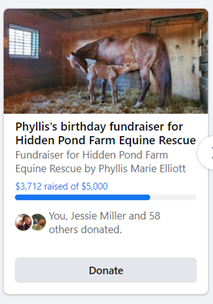
Add a Donate Button to Your Facebook Page
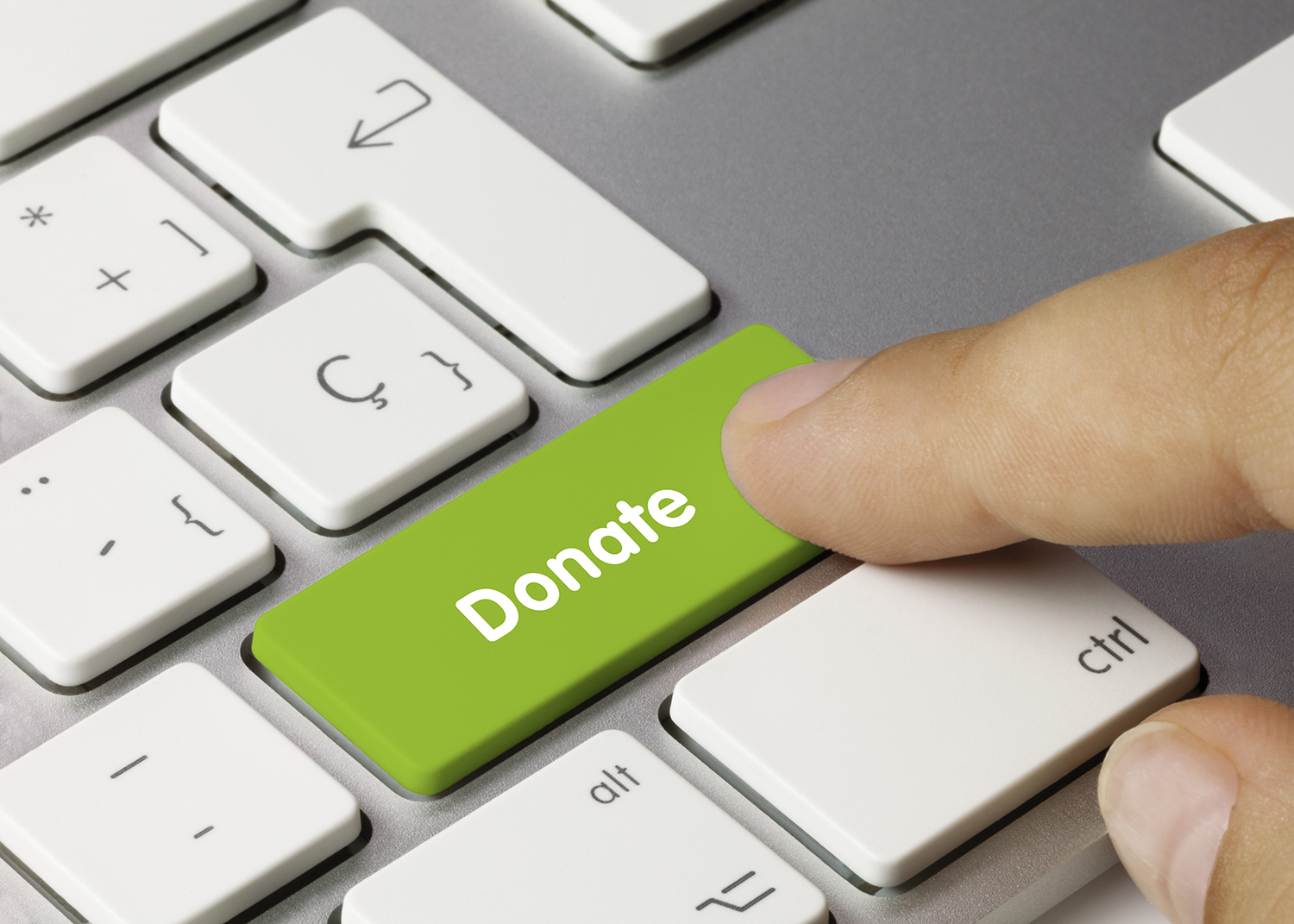 Finally, you can give your supporters the convenient option of donating directly from your Facebook page every day by adding a donate button.
Finally, you can give your supporters the convenient option of donating directly from your Facebook page every day by adding a donate button.
Now, the BEST way for donors to give is through your organization’s website so you can collect their contact information, but a donate button on your Facebook page gives supporters a quick and convenient way to give. Some organizations with large Facebook followings report significant revenue boosts after setting up a Facebook donate button.
To make the most of your Facebook donate button, commit to posting quality content consistently on your Facebook page. Host polls and contests to engage your audience. Incorporate videos and Facebook Live events into your content. Consider Facebook Ads to expose your content to a wider audience.
Track your analytics so you can spot trends and see the types of posts that get the most engagement. The more people you attract to your page and engage with quality content, the more opportunities you’ll have for donations through your donate button.
Don’t expect a donate button to work miracles on its own. But with a consistent, effective Facebook strategy, a donate button can become another good tool in your fundraising toolbox – yielding donations from people who otherwise would not give.
The Bottom Line
Facebook is a terrific marketing platform, and Facebook fundraising can generate a nice revenue stream for your nonprofit, becoming an important part of your annual fundraising plan.
But you have to work for it. Like all fundraising strategies, a passive approach won’t get results.
Daily tending of your Facebook garden and a consistent stream of quality content for your followers to enjoy will bring in donations from people who love the work your organization does.
Want some help running your first (or next!) Facebook Fundraiser? Grab the $5 Friday Facebook Fundraising video series at 50% off this week PLUS get a free month of Fundraising TV, where you’ll learn where to find generous new donors, how to keep current donors giving, and what to say to raise the money you need, whenever you need it.






Leave A Comment